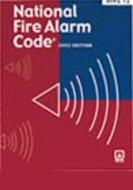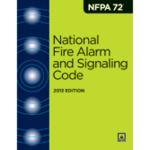Codes and standards published by NFPA are displayed as read-only under license from NFPA solely for use within this system. NFPA material may not be downloaded, printed, reproduced, or transferred.
Expanded and updated for 2022, NFPA 72®, National Fire Alarm and Signaling Code®, reflects the latest technologies, applications, and research on the use and installation of fire alarm and emergency communications systems.
Update to the newest benchmarks for fire alarm systems with requirements that reflect the needs and concerns of code users in the field today. The 2022 edition of NFPA 72, National Fire Alarm and Signaling Code, presents the most advanced provisions ever developed for the application, installation, location, performance, and inspection, testing, and maintenance (ITM) of fire alarm and emergency communications systems, including mass notification systems (MNS).
This edition features important updates for designers, installers, and AHJs-from a tagging program to provide at-a-glance details on the condition of fire alarm and signaling systems to pathway survivability.
In a major change to scope, NFPA 72, National Fire Alarm and Signaling Code, now addresses cybersecurity.
Criteria and guidance on the protection of fire alarm and signaling systems against cyberattacks can now be found in Chapter 11, “Cybersecurity”, and Annex J, “Guidelines for Cybersecurity”.
Other key changes address pathway survivability for transmitting system information during fire conditions.
Previously, NFPA 72 defined four levels of survivability and establishes the required level of protection for each application. It now includes a fifth option to reduce the 2-hour-rated application criteria to 1-hour-rated application criteria. Chapter 24 outlines specific requirements for the use of 1-hour application.
Other major updates in the 2022 edition of NFPA 72, National Fire Alarm and Signaling Code, include the following:
- Remote access to fire alarm and signaling systems for resetting, silencing, or operation of emergency control functions
- Use of remote access to perform diagnostics and update software from anywhere
- Numerous changes to detector technologies and methods
- A shift in the vocabulary and operation of detectors to provide greater resistance to false triggers
- A green, yellow, and red color-coded tagging program to visually monitor the condition of fire alarm and signaling systems
The 2022 edition of NFPA 72, National Fire Alarm and Signaling Code, is a must-have resource for everyone involved with fire alarm design, installation, inspection, and maintenance. To help ensure compliance with the most up-to-date guidelines in the field, order your copy from NFPA today. (Print, 432 pp., 2022)
Product Details
- Published:
- 09/15/2021
- Number of Pages:
- 432


